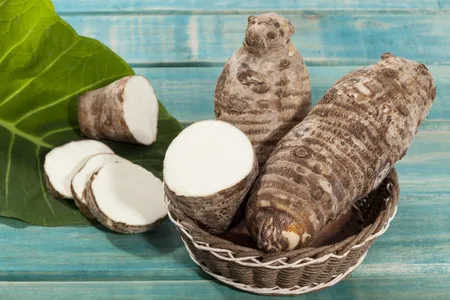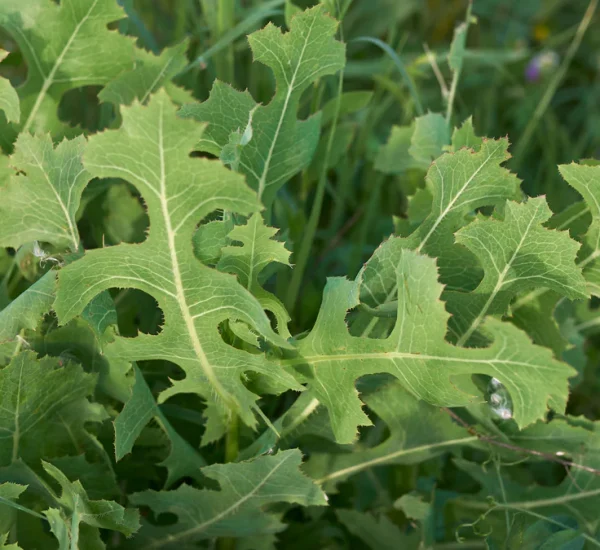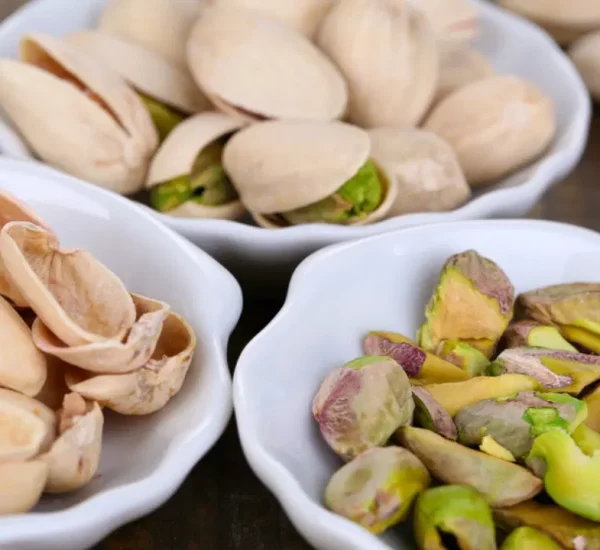Taro (Colocasia esculenta), recognized for its broad, heart-shaped leaves and starchy edible corm, has been a dietary cornerstone in tropical and subtropical regions for millennia. Renowned for its rich nutritional profile and culinary versatility, taro is much more than just a carbohydrate source—its root and other parts offer a plethora of health benefits that contribute to overall wellness. While the corm remains the star, the leaves and stems are equally cherished in various cultures for their unique contributions to health and cuisine.
Nutritional Profile and Benefits of Taro Root
The taro root is packed with essential nutrients, making it a valuable addition to a balanced diet. Below are its top 10 health benefits:
- Rich in Dietary Fiber Taro root is an excellent source of fiber, which aids digestion, promotes gut health, and helps you feel full longer. This makes it an ideal food for weight management.
- Nutrient-Dense Taro root is rich in vitamins and minerals, including vitamin E, vitamin B6, vitamin C, potassium, magnesium, and manganese. These nutrients support energy metabolism, cardiovascular health, and immune function.
- Supports Heart Health Potassium in taro root helps regulate blood pressure by balancing sodium levels, reducing strain on the cardiovascular system.
- Sustained Energy As a complex carbohydrate, taro provides a steady release of energy, helping you stay active and energized throughout the day.
- Boosts Immune Function Taro’s vitamin C content supports immune health, helping the body fight off illnesses and maintain overall wellness.
- Antioxidant Protection The antioxidants in taro root combat oxidative stress, reducing inflammation and promoting healthier skin and tissues.
- Regulates Blood Sugar High in fiber, taro root slows carbohydrate absorption, stabilizing blood sugar levels. This is especially beneficial for individuals managing diabetes.
- Promotes Bone Health The magnesium and calcium in taro root contribute to bone strength and density, reducing the risk of osteoporosis.
- Enhances Cognitive Health Vitamin E and antioxidants protect brain cells from oxidative damage, supporting cognitive function and potentially reducing age-related decline.
- Aids Weight Management The combination of fiber and slow-digesting carbohydrates keeps you feeling full longer, reducing overall calorie intake and aiding weight control efforts.
Culinary Uses and Applications
Taro root’s versatility in the kitchen makes it a staple ingredient in many cuisines. Here are some of the most popular ways to prepare and enjoy it:
- Boiled or Steamed Taro Peel the taro root and cook it until tender. It can be seasoned and served as a nutritious side dish.
- Mashed Taro Mash boiled taro with butter, coconut oil, or spices for a delicious alternative to mashed potatoes.
- Taro Fries or Chips Slice the root thinly, season, and bake or fry it for a crunchy snack that rivals potato chips.
- Taro in Soups and Stews Add cubed taro to soups or stews for a hearty and filling texture that complements other ingredients.
- Desserts and Sweets In many cultures, taro is used in desserts, such as taro pudding or sweetened taro balls, offering a unique flavor and creamy texture.
Safety Tip: Always cook taro thoroughly. Raw taro contains calcium oxalate, which can irritate the throat and digestive system if not neutralized by cooking.
Beyond the Root: Exploring Taro Leaves and Stems
While the taro root is the primary focus, the plant’s leaves and stems are also consumed in various cuisines, offering their own set of benefits:
- Nutritional Highlights of Taro Leaves Properly cooked taro leaves are rich in beta-carotene, a precursor to vitamin A that supports vision health. They also contain other antioxidants and nutrients that enhance overall health.
- Culinary Uses In many cultures, taro leaves are used in stews, curries, and wraps. For instance, dishes like Hawaiian laulau (meat or fish wrapped in taro leaves) showcase their versatility.
- Preparation Tip Like the root, taro leaves need to be cooked thoroughly to remove potentially irritating compounds such as calcium oxalate.
Why Choose Taro?
Taro’s impressive nutritional profile and culinary adaptability make it a powerhouse food for both health enthusiasts and food lovers. Here’s why it stands out:
- Sustainable Energy Source Taro’s complex carbohydrates provide sustained energy, making it ideal for athletes, active individuals, and anyone needing a reliable energy source.
- Rich in Essential Nutrients Few other roots offer the same combination of vitamins, minerals, and antioxidants, making taro a nutrient-dense choice.
- Cultural Heritage Beyond its health benefits, taro holds cultural significance in many regions, symbolizing abundance, nourishment, and tradition.
Conclusion
Taro (Colocasia esculenta) is far more than just a starchy root—it’s a nutritional powerhouse that supports digestion, heart health, immune function, and more. Its culinary versatility allows it to shine in savory dishes, snacks, and even desserts, while its leaves and stems add an extra layer of nutrition and flavor when properly prepared.
Whether you enjoy taro as a comforting mash, a crispy chip, or a hearty addition to soups, this ancient plant has something to offer everyone. Just be sure to cook it thoroughly to unlock its full potential and ensure safety.
Disclaimer: While taro is a nutritious and versatile food, individuals with dietary restrictions or medical conditions should consult a healthcare provider before incorporating it into their diet.
Feeling inspired? Share the benefits of taro with friends and family!




